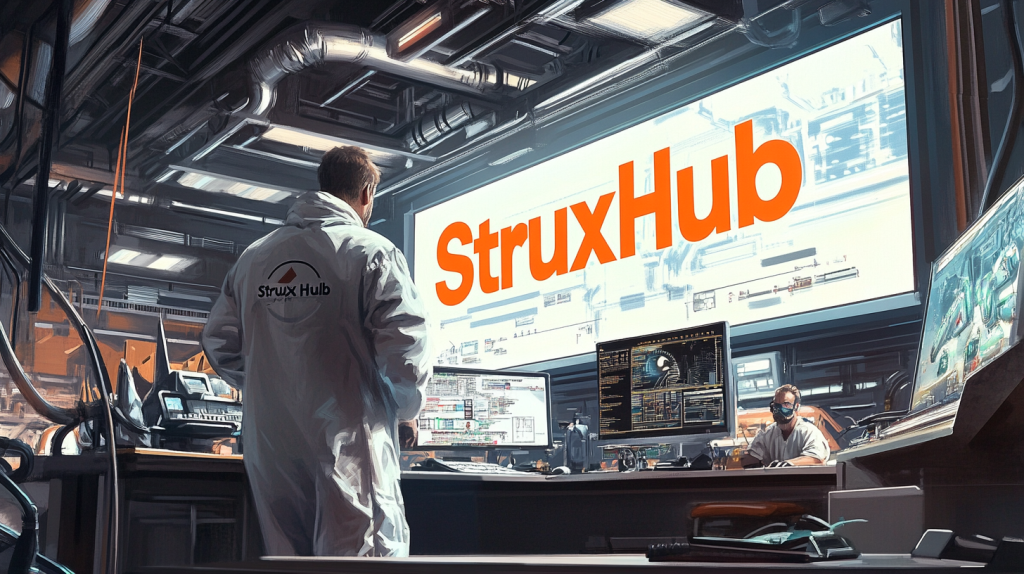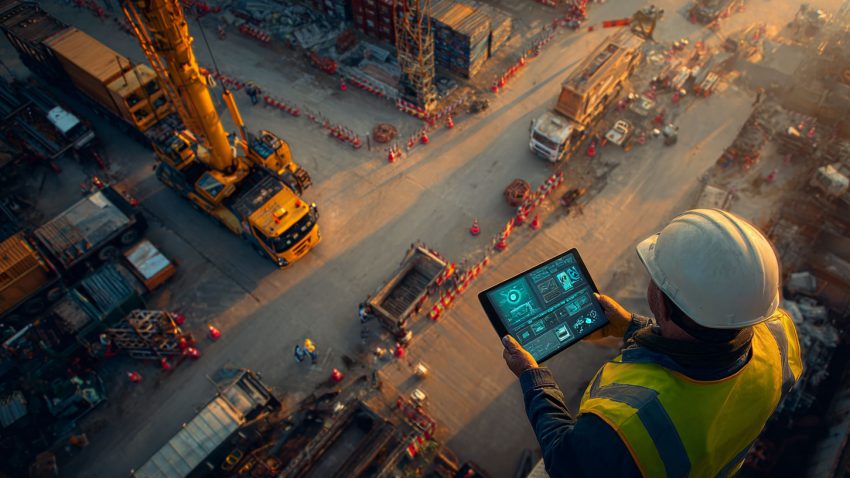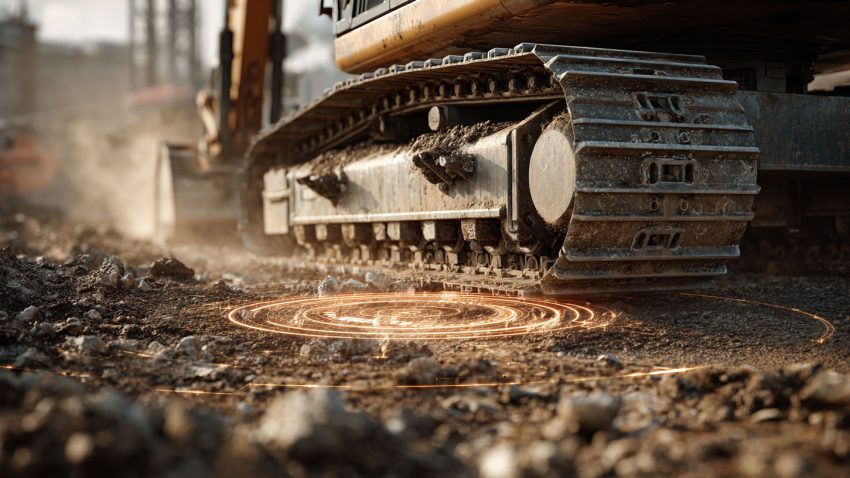Meta’s $10B Louisiana AI Data Center: What It Means for Construction, Energy & Local Growth
Table of Contents:

What Is Meta Building in Louisiana—and Why Is It So Important?
Meta’s announcement of a $10 billion artificial intelligence (AI) Data Center campus in Louisiana marks one of the most ambitious private infrastructure investments in U.S. history. The project, which will rise on the 2,250-acre former Franklin Farm megasite between Rayville and Delhi—roughly 30 miles east of Monroe—is more than a data center. It’s a statement of how tech giants plan to shape the future of AI, energy, and local economies.
The facility will span more than 4 million square feet, supporting Meta’s global AI ambitions while creating thousands of construction jobs and long-term technical roles. As demand for AI-driven platforms grows, Meta is investing in the infrastructure that powers everything from generative language models to real-time content moderation and machine learning. This campus is designed to host high-performance computing at massive scale, requiring energy-efficient systems, resilient connectivity, and precision engineering from the ground up.
The project’s location is strategic. It gives Meta access to key energy resources, abundant land, and a workforce eager for growth. But beyond the tech, this is a major moment for the construction industry—an opportunity to participate in a landmark project that blends speed, sustainability, and mission-critical delivery.
Top Benefits of the Louisiana AI Campus
- Establishes Louisiana as a national tech and energy hub
- Creates thousands of construction and skilled labor jobs
- Supports next-gen infrastructure for AI and data systems
- Attracts additional investment from supporting industries
Best Practices for Mega Tech Campus Development
- Secure scalable land and power assets during early planning
- Fast-track approvals by aligning state, utility, and tech partners
- Use phased construction for early commissioning of key systems
- Plan for long-term flexibility in building systems and site access
Meta’s $10B campus isn’t just big—it’s foundational. And its impact will stretch far beyond tech headlines.
How Will the AI Campus Transform Construction in the Region?
This project is more than steel and concrete—it’s a proving ground for the next evolution of large-scale construction. The Louisiana AI Campus will bring hyperscale methods to a rural region, forcing contractors, vendors, and crews to think bigger, move faster, and operate with more precision than ever before. It’s a challenge—and a catalyst.
Construction teams will face high expectations from day one. The project involves phased delivery, advanced MEP systems, high-density cooling, and hardened infrastructure built for 24/7 operation. Every milestone is time-sensitive, and every trade must be deeply aligned. Traditional project sequencing may not cut it here—teams will need to run multiple scopes in parallel, with minimal room for error.
This shift will drive innovation in workforce planning, material logistics, safety protocols, and QA/QC. For Louisiana-based contractors, it’s a once-in-a-generation chance to level up and participate in something globally relevant. For national firms, it’s a chance to prove that best-in-class execution isn’t limited to the coasts.
Top Benefits for the Construction Sector
- Opens new markets for tech-focused general contractors and subs
- Raises local construction standards through global collaboration
- Accelerates workforce training and upskilling in high-demand trades
- Establishes Louisiana as a blueprint for future mega builds
Best Practices for Delivering Mega Tech Projects
- Use digital tools for live coordination across all trades
- Adopt shift-based work cycles to keep pace with delivery targets
- Track QA/QC through centralized inspection and punchlist workflows
- Align field logistics with modular and prefabricated systems
The Louisiana AI Campus will transform more than just land—it will raise the bar for what’s possible in the region’s construction landscape.
StruxHub
Discover how StruxHub can revolutionize your construction management. Contact us today!
Why Energy Infrastructure Is at the Heart of Meta’s $10B Commitment
Power is the lifeblood of artificial intelligence. Behind every AI model is a massive cluster of GPUs, servers, and cooling systems that consume electricity at a scale few other industries approach. That’s why energy infrastructure is not just part of the Louisiana AI Campus—it’s central to its success.
Meta chose this location in part because of its access to reliable power sources and the ability to partner with regional utilities. The company has already signaled its intention to support the project with 100% renewable energy, likely through a combination of solar, wind, and long-term power purchase agreements (PPAs). This commitment adds a layer of complexity to the build—but also positions the campus as a global leader in clean, scalable AI infrastructure.
Local utilities and grid operators will play a huge role. Upgrades to transmission lines, substation expansions, and even new renewable energy projects will be required to meet the long-term demands of the facility. This is good news for the regional energy sector, which will see an influx of investment, innovation, and new job opportunities tied to next-gen electrification.
Top Benefits for Energy and Utility Development
- Boosts regional demand for renewable energy and grid upgrades
- Strengthens utility partnerships through long-term power agreements
- Encourages new investment in sustainable infrastructure
- Supports Louisiana’s push to become an energy innovation hub
Best Practices for Energy-Driven Construction Projects
- Collaborate with utilities early during preconstruction planning
- Secure PPAs that scale with facility growth over time
- Incorporate microgrid and backup systems from the start
- Design infrastructure to support future AI and power density needs
Meta’s data needs may be global—but the energy transformation is deeply local. Louisiana is now on the map for high-performance, high-efficiency infrastructure.
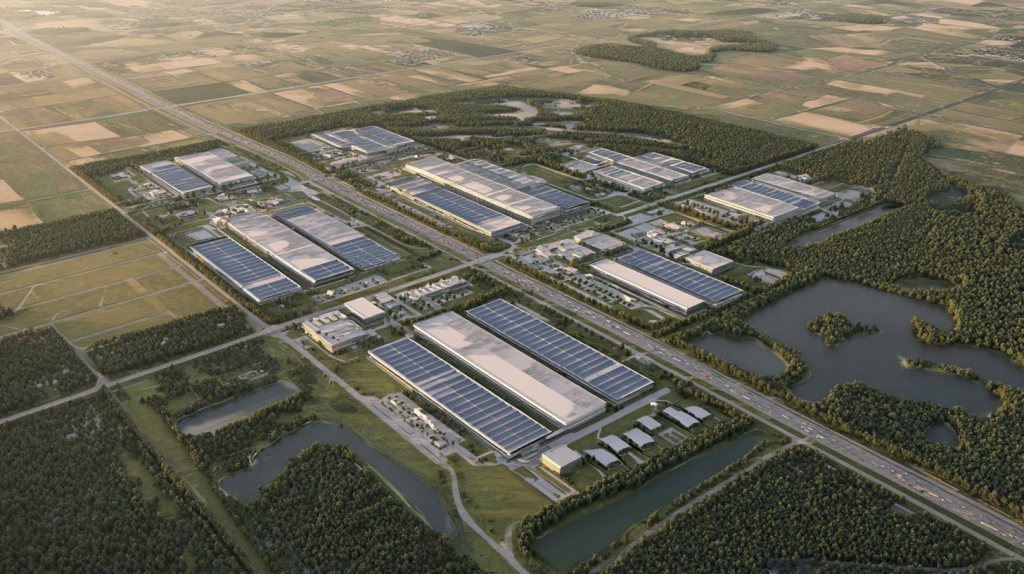
What Does This Mean for Louisiana’s Economy and Local Workforce?
A $10 billion investment doesn’t just build buildings—it builds momentum. Meta’s AI Campus is expected to generate over 2,000 construction jobs during its peak and hundreds of long-term operational roles once the facility is online. For Louisiana, this is more than a win—it’s a strategic shift in the state’s economic trajectory.
The Richland Parish region has traditionally relied on agriculture and small-scale manufacturing. This project introduces a new sector: digital infrastructure. That means new training programs, better-paying jobs, and a tech-driven ecosystem that can support long-term growth. Community colleges, workforce development agencies, and trade unions are already moving to align their programs with the needs of this project and others like it.
Local suppliers and service providers will benefit as well. From site prep and security to catering and trucking, the ripple effect will extend well beyond the jobsite. And as more companies follow Meta’s lead, the region could become a destination for data, energy, and high-tech manufacturing investments.
Top Benefits for Local Growth
- Creates short- and long-term employment opportunities
- Attracts secondary businesses to the region
- Increases tax base and infrastructure investment
- Opens the door for education and training in future-ready careers
Best Practices for Economic Development Partnerships
- Coordinate workforce programs with construction timelines
- Involve local trade schools and apprenticeships early
- Prioritize local hiring through project labor agreements
- Invest in long-term site infrastructure for future tenants
Meta’s campus will generate megawatts of power—but just as important, it’s generating opportunity.
How the Louisiana AI Campus Raises the Bar for Project Speed and Repeatability
Meta didn’t just choose Louisiana for the land—it chose Louisiana for the opportunity to execute a repeatable build at hyperscale speed. The company has developed a data center delivery model that’s designed to move fast, adapt locally, and standardize globally. That’s exactly what’s happening here.
Repeatability is key. Meta’s building systems, design models, procurement workflows, and even logistics layouts are refined and reused across projects. This minimizes rework, streamlines onboarding, and accelerates delivery. It also reduces risk—for both the owner and contractors—by creating a controlled, data-informed environment where expectations are clear from day one.
But speed isn’t just about templates—it’s about real-time visibility. That means jobsite teams must be equipped with digital coordination tools, mobile reporting apps, and dashboards that track progress down to the zone and task level. The Richland Parish campus will be a live demonstration of how hyperscale teams maintain velocity without sacrificing safety or quality.
Top Benefits of Repeatable, High-Speed Execution
- Speeds up delivery while maintaining consistency
- Lowers cost per square foot through process standardization
- Improves coordination across national and local project teams
- Builds a scalable model for future AI and data builds
Best Practices for Building at Hyperscale Speed
- Use playbooks and modular designs for repeatability
- Track daily progress digitally by zone and phase
- Prequalify trade partners aligned with fast-paced delivery
- Standardize documentation and QA/QC checklists across sites
Meta’s approach isn’t just fast—it’s a system. And that system is quickly becoming the standard for how hyperscale campuses get built.
How StruxHub Supports Complex, Fast-Moving Projects Like Meta’s AI Campus
At the scale and speed of Meta’s Louisiana AI Campus, traditional coordination methods simply don’t work. With hundreds of trades in motion, zone-based handovers, and mission-critical systems being tested mid-construction, project success depends on clarity, accountability, and real-time visibility. That’s where StruxHub fits in.
StruxHub is designed for exactly this kind of environment—where multiple scopes, teams, and inspections need to move in sync without delay. It helps superintendents and project managers assign tasks, track progress, resolve issues, and manage documentation from the field or office, all within a unified platform.
In mega builds like this one, workflows must be streamlined and digital. Daily reports, RFIs, punch lists, and QA/QC items can’t get lost in emails or siloed spreadsheets. StruxHub brings them all into one place, updated live, and accessible to the right teams at the right time.
As Meta raises the bar on how hyperscale construction is delivered, platforms like StruxHub help project teams rise with it—by turning chaos into coordination and keeping execution on track from precon to handoff.

StruxHub
Experience the power of StruxHub today and witness firsthand how it can revolutionize your construction operations.
FAQ
What is Meta’s AI Campus in Louisiana and why is it significant?
Meta’s AI Campus in Richland Parish, Louisiana, is a $10 billion investment into one of the most advanced data infrastructure projects ever built in the U.S. The campus will span more than 4 million square feet and support Meta’s global artificial intelligence operations. Designed for high-performance computing, the facility will house thousands of servers and advanced cooling systems, all built with hyperscale speed and mission-critical precision.
The project is significant for several reasons. First, it marks one of the largest private construction investments in Louisiana’s history, putting the state on the map as a hub for digital infrastructure. Second, it represents Meta’s growing need for scalable AI capacity, signaling how central AI has become to the company’s long-term strategy.
It also has national implications. The campus will require massive energy, labor, and material coordination—driving innovation in how hyperscale construction is managed. It sets a precedent for how tech companies collaborate with utilities, state governments, and the construction industry to deliver fast, efficient, and sustainable infrastructure.
For contractors, developers, and local communities, this isn’t just a project—it’s a model. It’s showing how future data centers, manufacturing campuses, and AI facilities will be built at record pace with global expectations and regional impact.
How will this project impact Louisiana’s economy?
The economic ripple effects of Meta’s AI Campus will be substantial. During peak construction, the project is expected to generate over 2,000 skilled labor jobs, including opportunities for local subcontractors, material suppliers, and service providers. Long-term, the facility will require technical staff, energy partners, and ongoing maintenance teams, creating sustained employment far beyond the initial build.
But the impact goes further. The presence of a major global tech company like Meta attracts new investment into the region—both from supporting industries and from other companies looking to capitalize on improved infrastructure. Utility upgrades, broadband expansions, and transportation improvements tied to the campus will also benefit surrounding communities.
Workforce development is another key benefit. Community colleges and trade programs in the area are already exploring partnerships to train workers for data center operations, high-voltage systems, and advanced fabrication. This positions Louisiana to compete nationally for tech and energy-related jobs.
In short, this project isn’t just good for Meta—it’s a catalyst for long-term economic transformation in the region.
Why is renewable energy a priority for Meta’s data campus?
Meta has committed to powering its global operations with 100% renewable energy, and the Louisiana AI Campus is no exception. Given the power demands of AI infrastructure—which require constant server cooling, backup systems, and 24/7 uptime—securing sustainable energy sources is a major component of the project.
To meet this goal, Meta is likely entering long-term power purchase agreements (PPAs) with utility partners for solar, wind, or other renewable energy sources in the region. These deals ensure stable pricing, improve Meta’s carbon footprint, and help fund the expansion of Louisiana’s renewable energy grid.
From a construction perspective, this adds another layer of coordination. Energy infrastructure must be designed not only to support current needs but to scale with future capacity as Meta’s AI demands grow. Substations, transmission lines, and backup systems must all meet strict environmental and performance standards.
The focus on renewable energy also creates broader benefits. It positions Louisiana as a forward-thinking energy state, invites new green investments, and supports the local transition to cleaner infrastructure—all driven by a single, high-profile project.
How will construction teams handle the scale and speed of this project?
Handling a hyperscale project like Meta’s AI Campus requires a shift in both mindset and systems. The project involves fast-track scheduling, phased zone turnover, high-density systems, and coordination across hundreds of vendors and trades. To keep pace, construction teams must rely on digital tools, modular construction methods, and real-time reporting.
Shift-based work schedules will likely be implemented to keep the project moving 24/7. Modular and prefabricated systems will reduce onsite assembly time and improve quality control. Field teams will work in parallel, not sequentially, which means communication must be tight, standardized, and updated daily.
Construction managers will also need to adopt centralized platforms for tracking RFIs, daily logs, QA/QC, and task assignments. This prevents duplication, improves accountability, and speeds up issue resolution—critical in a build where every day counts.
The scale is massive, but with the right workflows, it’s manageable. Projects like Richland Parish are showing how speed, scale, and safety can coexist—when teams are equipped to move with confidence.
What can future construction projects learn from Meta’s approach?
Meta’s $10B AI Campus sets a new standard for how hyperscale projects are delivered. Future projects—whether in tech, manufacturing, or energy—can learn a lot from Meta’s approach to planning, coordination, and repeatability.
One key takeaway is the importance of standardized systems. Meta reuses building designs, procurement models, and delivery timelines across campuses. This reduces risk and helps construction teams hit the ground running. It also ensures consistent quality and performance across locations.
Another lesson is the value of local partnerships. Meta worked closely with Louisiana officials, utilities, and workforce agencies to ensure that the project supports regional goals. This type of collaboration reduces friction, accelerates approvals, and builds community trust.
Lastly, future projects should note how Meta embraces technology in the field. From digital dashboards to mobile inspections, the project runs on data. This reduces delays and allows faster, more confident decision-making across teams.
Meta isn’t just building for today—it’s building a repeatable model for tomorrow. And that’s exactly what more owners, developers, and contractors will need to compete in the next era of construction.
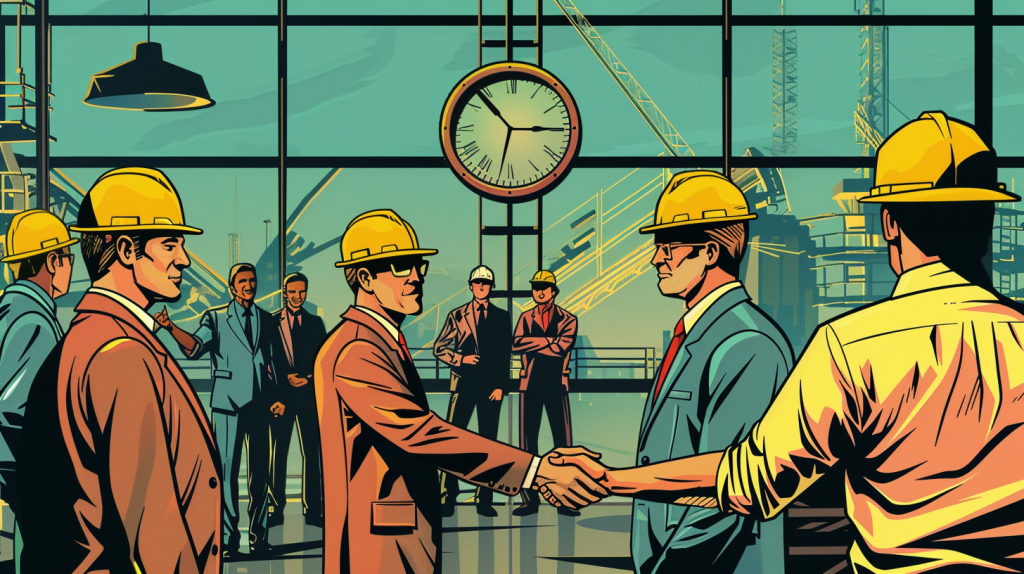
StruxHub
Discover how StruxHub can revolutionize your construction management. Contact us today!
Pillar Articles Links:
Best Guide to Construction Logistics Plans (CLPs): What Owners Want to See Before Work Starts
Best Construction Scheduling Software for General Contractors and Superintendents
